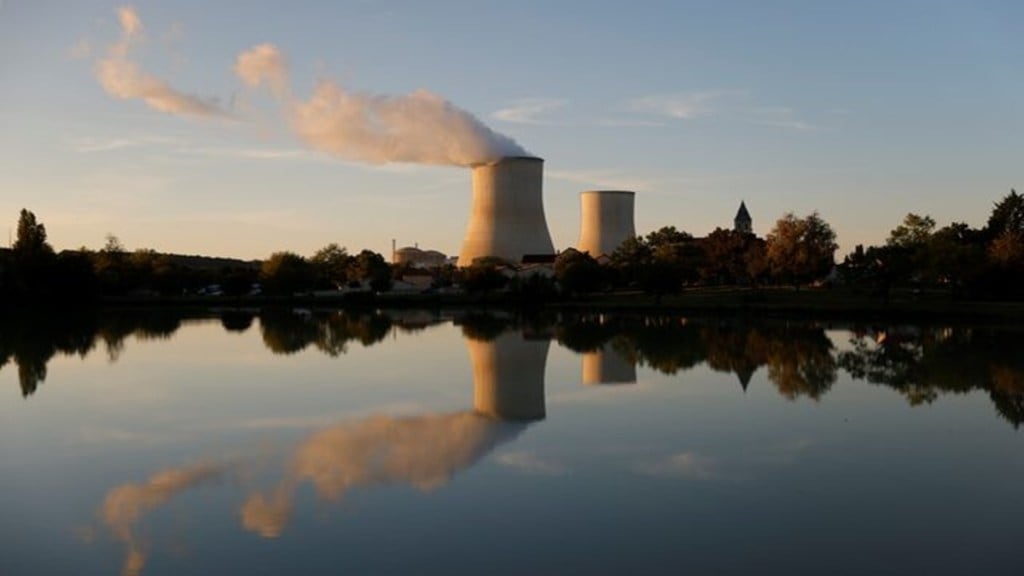Just as the country is set to make the policy as well as the legislative framework conducive for private sector play in civil nuclear energy, many Indian companies — state-run and private — have set their eyes on the sector.
State-run NTPC, an early mover, is already in talks with three American companies — NuScale Power, Westinghouse Electric Company and Holtec International — and Russia’s Rosatom for indigenous development of pressurised water reactors (PWRs). L&T too is looking at collaborating with Holtec, which has got approval from the US Department of Energy for transfer of the flexible and cost-effective small modular reactor (SMR) technology to India.
State-run oil marketing company Indian Oil will also be entering the nuclear sector “sometime in the near future.” According to a source, the Adani Group too is “studying the market” for a potential entry into the sector. But it is still to decide where to house the projects, among its three energy-sector companies for thermal, green energy and transmission.
In a media call after the release of its Q4 results, Tata Power had said, “We are getting ready and (evaluating) various locations and technologies.”
The coming monsoon session of Parliament is likely to carry out the much-awaited amendments to the Atomic Energy Act, 1962, and the Civil Liability for Nuclear Damage Act, 2010, to facilitate the entry of private firms in nuclear power generation. This comes 17 years after a civil nuclear deal was struck between India and the US that made India a virtual member of the global nuclear club.
In the Budget for FY26, finance minister Nirmala Sitharaman announced a plan to set up a Nuclear Energy Mission for research and development of SMRs with an outlay of Rs 20,000 crore to be spent over the next few years. She also set a target to develop “at least 100 GW of nuclear energy by 2047,” an ambitious one given that the installed strength of nuclear power in the country is just 8.1 GW, or barely 2% of its total electricity generation capacity. The minister has since reiterated multiple times that SMR technology would be given policy thrust, as it allows reduced gestation time, lower capital investment, and enhanced safety features. These reactors can also be easily transported to sites from factories, allowing more dispersed capacity of the low-carbon energy.
An NTPC source said: “Currently we are under discussions with NuScale Power, Rosatom, Westinghouse Electric Company, and Holtec International for importing required technology for setting up nuclear power plants which are subject to the Atomic Energy Regulatory Board’s approval.” The state-run company had earlier invited expression of interest for PWR technology.
NTPC alone is aiming to commission 30 GW of nuclear capacity by 2047, a company official had told FE earlier.
State-run Nuclear Power Corporation of India (NPCIL) has been the lone commercial player in the country to undertake nuclear power ventures, and the entire extant capacity belongs to it. The Bhabha Atomic Research Centre, Indira Gandhi Centre for Atomic Research, and Indian Rare Earths (IREL) have their feats of strength, but are yet to have the required synergies with the private sector.
India has a plan to nearly triple its nuclear power capacity to 22.8 GW by FY32 with 10 plants under construction. NTPC is now building nuclear plants with 2.8 GW capacity in collaboration with NPCIL in Rajasthan. NTPC has formed a wholly-owned subsidiary, NTPC Parmanu Urja Nigam, to undertake nuclear projects and is looking to develop plants across many states .
L&T is currently in the process of qualifying its arm L&T Special Steels and Heavy Forgings for a tie-up with Holtec. It’s finalising a strategic agreement with Holtec for Indian as well as global markets, said Anil V Parab, whole-time director & senior executive vice president (heavy engineering & L&T valves), L&T.
Parab said the company is also in advanced talks with other global technology players. Besides domestic market, L&T plans to expand into the global market for nuclear energy. “We are exploring possibilities of expanding our portfolio in nuclear services & fuel fabrication,” Parab said. L&T already has end-to-end capabilities in manufacturing and construction with one of the largest talent pools in nuclear work, he said .
Emails sent to Tata Consulting Engineers and Holtec did not elicit any response.
State-run oil marketing company Indian Oil is also looking for a foray into nuclear energy and has firmed up a strategy, sources told FE. “A foray into nuclear energy is on the strategy table. We will be willing to enter the segment sometime in future,” a source said.
The company in 2011 had entered into a joint venture agreement with NPCIL for setting up nuclear power plants across the country but no major progress was made.
Tata Power chairman N Chandrasekaran recently said the company “is primed for the anticipated opening up of the nuclear sector for private participation.”
“From our side, we are getting ready. We are looking at various locations and technologies. But we can take the next steps only once we have clarity on the changes in the laws,” said Praveer Sinha , managing director and CEO of Tata Power in the media call after Q4 results.
Along with the country’s power and refiners, state-owned finance companies have renewed their interest in funding nuclear power projects.
REC is evaluating to enter into the nuclear space in the next two-to-three years with plans to lend to the public sector companies coming up with nuclear power projects, the company had earlier told FE. “Nuclear is another new opportunity for us to participate. This entails Rs 10-12 lakh crore opportunity. We would evaluate and in the next 2-3 years we could see something happening,” the company’s then director (projects) Vijay Kumar Singh said, adding that the company would focus on SMRs.

